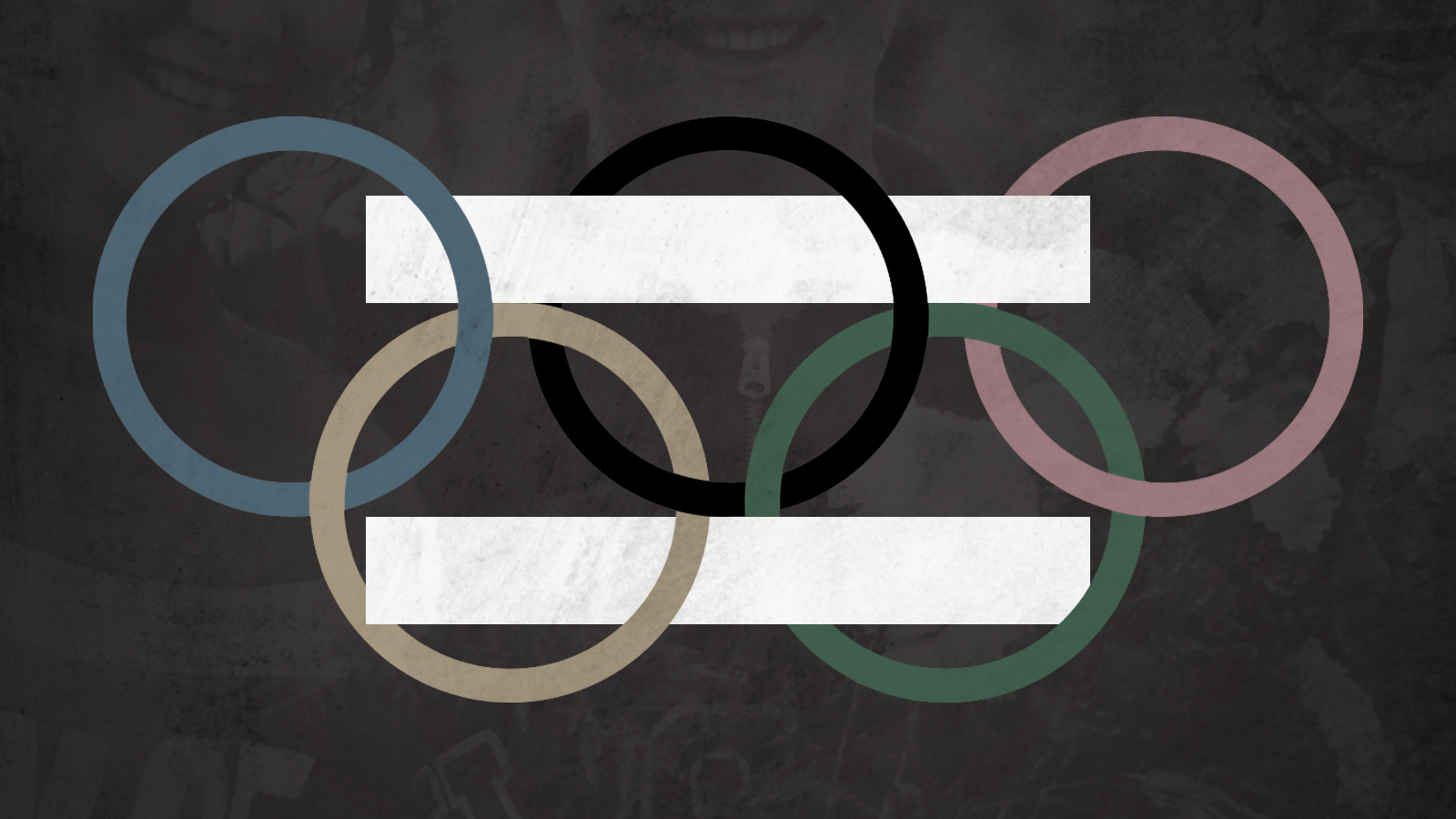The Olympics give fans what they want: More women's sports
A record number of female athletes isn't the radical feminist it might once have seemed


Olympic canoeing is an unlikely bellwether for the state of the Games. Though it's been a part of the summer Olympics since 1936, the sport is not as popular as its preppier cousin, rowing, and it doesn't tend to produce prime-time stars like swimming and gymnastics.
Well, unless Nevin Harrison has something to say about it.
One of the preternaturally talented Gen Zers headed to Tokyo, the 19-year-old world champion is poised to potentially become the first American woman to win an Olympic canoe or kayak gold medal. But despite canoeing's long history at the summer games, she'll be competing in a brand new Olympic event: the women's 200-meter canoe singles. It's one of three women's events that have been added to the typically male-dominated canoeing section — and it comes at the expense of three men's events, in line with the IOC's goal of achieving 50 percent female participation across the Games by 2020.
The Week
Escape your echo chamber. Get the facts behind the news, plus analysis from multiple perspectives.

Sign up for The Week's Free Newsletters
From our morning news briefing to a weekly Good News Newsletter, get the best of The Week delivered directly to your inbox.
From our morning news briefing to a weekly Good News Newsletter, get the best of The Week delivered directly to your inbox.
But for all the grumbles about "marketing and politics" by those opposed to the elimination of a handful of male canoeing and kayaking events to reach the benchmark, the influx of women competitors this year is hardly an example of woke tokenism. The Olympics are just giving the fans what they want: more female athletes to watch in the competition.
Nearly 50 years since the passage of Title IX, more women than ever are playing sports in the United States. Coverage of women's sports, though, has not kept pace: "Women's sports receive the same amount of news coverage as they did in the 1980s," a Purdue study found earlier this year — that being about 5.4 percent of all airtime, or 3.5 percent once the Women's World Cup is factored out. But while there remains a pervasive misconception that women's sports aren't as "elite" or "exciting" due to constraints of physical strength, "the media creates demand as much as it meets it" according to Cheryl Cooky, one of the Perdue study's authors. As Cooky further pointed out to The Atlantic in 2015, part of the reason men's sports even seem more exciting in the first place is that "they have higher production values, higher-quality coverage, and higher-quality commentary … When you watch women's sports, and there are fewer camera angles, fewer cuts to shot, fewer instant replays, yeah, it's going to seem to be a slower game, [and] it's going to seem to be less exciting."
But clearly the interest in women's sports exists, even if it's not directly being catered to on American sports pages. Last year, women's sports adapted brilliantly to the COVID-19 pandemic, with the National Women's Soccer League being the first professional sport to return after the shutdown. While cynics might argue the league's 500 percent jump in viewership was because nothing else was on, the "record-breaking growth" of interest in women's sports has carried over into 2021, NorthJersey.com reports, noting that last month more people watched Game 2 of the Women's College World Series than the Islanders-Bruins NHL playoff game on NBCSN that same day.
The international stage has long been one of the best opportunities for female athletes to secure TV time in the U.S., and the Olympics most of all. But the IOC's conscious effort to boost women's participation at the summer Games — 48.8 percent of the Tokyo field will be women, up from 45 percent at the 2016 Rio Olympics and 2.2 percent at the 1900 Olympics, the first year women were included, according to The New York Times — is a game of catch-up more than it is a driver of significant change. "Historically, the boost that the Olympics and all big sporting events have given to interest in and coverage of women has not translated into lasting changes," explained Olga Harvey, the chief strategy and impact officer at the Women's Sports Foundation, to the Times.
A free daily email with the biggest news stories of the day – and the best features from TheWeek.com
So while issues of broadcasting parity and interest in women's sports are undoubtedly linked, the IOC's push to add more women's sports as well as mixed-gender competitions seems more overdue than anything else. Sports like BMX freestyle park riding, surfing, and skateboarding haven't been male-dominated in years, and having equal numbers of male and female competitors is a no-brainer, not the radical feminist statement it might have seemed like in the 1990s. Look no further than the female canoe competitors who surged into the spots opened up by the International Canoe Federation — and the fans who are already clamoring to watch them compete.
Progress is progress, and fans watching at home will be rewarded by the IOC's tweaks to the programming. Not long ago, there were snickers at the thought of female canoe sprinters; now, it's a given like anything else. "Everyone wants to be an Olympian," Harrison explained to The Associated Press. And overdue or not, she'll be attending the first games where, it seems, everyone finally gets to be.
Jeva Lange was the executive editor at TheWeek.com. She formerly served as The Week's deputy editor and culture critic. She is also a contributor to Screen Slate, and her writing has appeared in The New York Daily News, The Awl, Vice, and Gothamist, among other publications. Jeva lives in New York City. Follow her on Twitter.
-
 Political cartoons for January 3
Political cartoons for January 3Cartoons Saturday's political cartoons include citizen journalists, self-reflective AI, and Donald Trump's transparency
-
 Into the Woods: a ‘hypnotic’ production
Into the Woods: a ‘hypnotic’ productionThe Week Recommends Jordan Fein’s revival of the much-loved Stephen Sondheim musical is ‘sharp, propulsive and often very funny’
-
 ‘Let 2026 be a year of reckoning’
‘Let 2026 be a year of reckoning’Instant Opinion Opinion, comment and editorials of the day
-
 Bari Weiss’ ‘60 Minutes’ scandal is about more than one report
Bari Weiss’ ‘60 Minutes’ scandal is about more than one reportIN THE SPOTLIGHT By blocking an approved segment on a controversial prison holding US deportees in El Salvador, the editor-in-chief of CBS News has become the main story
-
 Has Zohran Mamdani shown the Democrats how to win again?
Has Zohran Mamdani shown the Democrats how to win again?Today’s Big Question New York City mayoral election touted as victory for left-wing populists but moderate centrist wins elsewhere present more complex path for Democratic Party
-
 Millions turn out for anti-Trump ‘No Kings’ rallies
Millions turn out for anti-Trump ‘No Kings’ ralliesSpeed Read An estimated 7 million people participated, 2 million more than at the first ‘No Kings’ protest in June
-
 Ghislaine Maxwell: angling for a Trump pardon
Ghislaine Maxwell: angling for a Trump pardonTalking Point Convicted sex trafficker's testimony could shed new light on president's links to Jeffrey Epstein
-
 The last words and final moments of 40 presidents
The last words and final moments of 40 presidentsThe Explainer Some are eloquent quotes worthy of the holders of the highest office in the nation, and others... aren't
-
 The JFK files: the truth at last?
The JFK files: the truth at last?In The Spotlight More than 64,000 previously classified documents relating the 1963 assassination of John F. Kennedy have been released by the Trump administration
-
 'Seriously, not literally': how should the world take Donald Trump?
'Seriously, not literally': how should the world take Donald Trump?Today's big question White House rhetoric and reality look likely to become increasingly blurred
-
 Will Trump's 'madman' strategy pay off?
Will Trump's 'madman' strategy pay off?Today's Big Question Incoming US president likes to seem unpredictable but, this time round, world leaders could be wise to his playbook
